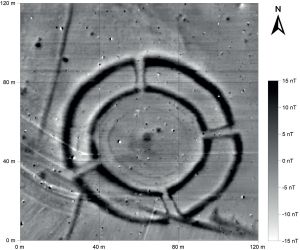Ludwig-Maximilians University of Munich, Federal Republic of Germany
E-mal: fassbinder@geophysik.uni-muenchen.de
Keywords: magnetometry, field magnetometers, soil magnetism, archaeological interpretation.
Magnetic prospection was applied for the first time to archaeology in 1956, and over the years since then, it has become one of the most important archaeological methods for the detection and mapping of buried remains at large archaeological sites. Magnetic detection methods are extremely sensitive in the characterization and detection of iron oxides, much more so than any other form of chemical analysis. Therefore, given a full understanding of the nature of magnetic properties, many details of soil layers and buried archaeological structures can be discovered, visualized, and interpreted only by the “magnetic eye”. A complete archaeological interpretation prior to excavation must consider all available archaeological background information as well as surface findings, however, many more crucial details can be derived through a comprehensive soil magnetic analysis, and many new archaeological questions arise from such geophysical prospecting results. The article presents a description of the magnetometric method fundamentals. Special attention is paid to different types of magnetization of archaeological objects and peculiarities of their interpretation..
DOI: 10.31857/S086960630005672-8








